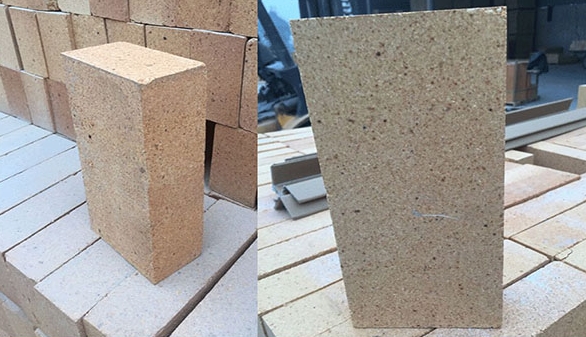- 14
- Dec
The firing process of clay bricks produced by refractory brick manufacturers
The firing process of clay bricks produced by refractory brick manufacturers

Drying medium inlet temperature: 150~200C (standard brick and ordinary brick)
120~160℃(Special-shaped brick)
Exhaust temperature: 70~80℃
The residual moisture of the brick is less than 2%
Drying time: 16~24 hours
The firing of clay bricks can be divided into four stages
1. Normal temperature to 200 degrees Celsius: At this time, the temperature should not be too fast to prevent the body from cracking. When firing in a tunnel kiln, the temperature of the first 4 parking spaces should not exceed 200℃
2, 200~900C: At this stage, the heating rate should be increased to facilitate the chemical reaction of organic matter and impurities in the green.
Within the temperature range of 600~900℃, a strong oxidizing atmosphere should be maintained in the kiln to prevent the occurrence of “black core” waste
3, 900℃ to the highest firing temperature: In the high temperature stage, the temperature should rise steadily, and continue to maintain an oxidizing atmosphere, so that the defective body is heated evenly, and at the same time, it can also prevent the brick from cracking. Because the sintering shrinkage is very strong above 1100c, the shrinkage rate is as high as 5%, so it is very important to maintain the relaxation of the temperature gradient and eliminate the internal stress.
The fire resistance temperature of clay bricks is generally 100-150C higher than the sintering temperature. If the sintering temperature range of the sintered clay is narrow, the refractory temperature should be lower, preferably around 50-100C. The sintering temperature of clay bricks should ensure that the combined clay is fully softened, and the surface layer of the fine powder and coarse particles of the clinker is fully reacted, so that the clinker particles can be bonded, so that the product can obtain proper strength and volume stability. The sintering temperature is generally 1250~1350c. When the content of al2o3 is high, the sintering temperature of the product should be appropriately increased, about 1350~1380c, and the heating time is generally 2-10h to ensure sufficient reaction in the product and consistent product quality.
4 Cooling stage: According to the lattice change of the clay brick in the cooling section, the cooling rate should be reduced rapidly when the temperature is above 800~1000℃, and the cooling rate should be slowed down below 800℃. In fact, in actual production, the actual cooling rate used will not cause the risk of cold cracking of the product.
